- Family Physician
- Physical Therapy
- Osteopathic Therapy
- Massage Therapy
- Acupuncture Therapy
- Yoga Therapy
- Ozone Therapy
- Lymphedema Therapy
- Wellness Therapy ↴
- › Fitline
- › Meditation
- › Nutritional Guidance
- › Medlight PRO
- › Watt-Ahh
- Oncology Support
- › Lymphedema Therapy
- Family Physician
- Physical Therapy
- Osteopathic Therapy
- Massage Therapy
- Acupuncture Therapy
- Yoga Therapy
- Ozone Therapy
- Lymphedema Therapy
- Wellness Therapy ↴
- › Fitline
- › Meditation
- › Nutritional Guidance
- › Medlight PRO
- › Watt-Ahh
- Oncology Support
- › Lymphedema Therapy
- Family Physician
- Physical Therapy
- Osteopathic Therapy
- Massage Therapy
- Acupuncture Therapy
- Yoga Therapy
- Ozone Therapy
- Lymphedema Therapy
- Wellness Therapy ↴
- › Fitline
- › Meditation
- › Nutritional Guidance
- › Medlight PRO
- › Watt-Ahh
- Oncology Support
- › Lymphedema Therapy
- Family Physician
- Physical Therapy
- Osteopathic Therapy
- Massage Therapy
- Acupuncture Therapy
- Yoga Therapy
- Ozone Therapy
- Lymphedema Therapy
- Wellness Therapy ↴
- › Fitline
- › Meditation
- › Nutritional Guidance
- › Medlight PRO
- › Watt-Ahh
- Oncology Support
- › Lymphedema Therapy
- Family Physician
- Physical Therapy
- Osteopathic Therapy
- Massage Therapy
- Acupuncture Therapy
- Yoga Therapy
- Ozone Therapy
- Lymphedema Therapy
- Wellness Therapy ↴
- › Fitline
- › Meditation
- › Nutritional Guidance
- › Medlight PRO
- › Watt-Ahh
- Oncology Support
- › Lymphedema Therapy
- Family Physician
- Physical Therapy
- Osteopathic Therapy
- Massage Therapy
- Acupuncture Therapy
- Yoga Therapy
- Ozone Therapy
- Lymphedema Therapy
- Wellness Therapy ↴
- › Fitline
- › Meditation
- › Nutritional Guidance
- › Medlight PRO
- › Watt-Ahh
- Oncology Support
- › Lymphedema Therapy
- Family Physician
- Physical Therapy
- Osteopathic Therapy
- Massage Therapy
- Acupuncture Therapy
- Yoga Therapy
- Ozone Therapy
- Lymphedema Therapy
- Wellness Therapy ↴
- › Fitline
- › Meditation
- › Nutritional Guidance
- › Medlight PRO
- › Watt-Ahh
- Oncology Support
- › Lymphedema Therapy
- Family Physician
- Physical Therapy
- Osteopathic Therapy
- Massage Therapy
- Acupuncture Therapy
- Yoga Therapy
- Ozone Therapy
- Lymphedema Therapy
- Wellness Therapy ↴
- › Fitline
- › Meditation
- › Nutritional Guidance
- › Medlight PRO
- › Watt-Ahh
- Oncology Support
- › Lymphedema Therapy
- Family Physician
- Physical Therapy
- Osteopathic Therapy
- Massage Therapy
- Acupuncture Therapy
- Yoga Therapy
- Ozone Therapy
- Lymphedema Therapy
- Wellness Therapy ↴
- › Fitline
- › Meditation
- › Nutritional Guidance
- › Medlight PRO
- › Watt-Ahh
- Oncology Support
- › Lymphedema Therapy
- Family Physician
- Physical Therapy
- Osteopathic Therapy
- Massage Therapy
- Acupuncture Therapy
- Yoga Therapy
- Ozone Therapy
- Lymphedema Therapy
- Wellness Therapy ↴
- › Fitline
- › Meditation
- › Nutritional Guidance
- › Medlight PRO
- › Watt-Ahh
- Oncology Support
- › Lymphedema Therapy
- Andrzej Strzalkowski, RPT
- Renata Strzalkowski, MS
- Elizabeth Pulawski, M.D.
- Nathalie Cecilia, LMT
- Brook Longobardi, RYT, Y4C
- Ellen Teeter, AP, DOM
- Jamie Longobardi, LMT
- Michele Herbert, RPT
- Andrzej Strzalkowski, RPT
- Renata Strzalkowski, MS
- Elizabeth Pulawski, M.D.
- Nathalie Cecilia, LMT
- Brook Longobardi, RYT, Y4C
- Ellen Teeter, AP, DOM
- Jamie Longobardi, LMT
- Michele Herbert, RPT
- Andrzej Strzalkowski, RPT
- Renata Strzalkowski, MS
- Elizabeth Pulawski, M.D.
- Nathalie Cecilia, LMT
- Brook Longobardi, RYT, Y4C
- Ellen Teeter, AP, DOM
- Jamie Longobardi, LMT
- Michele Herbert, RPT
- Andrzej Strzalkowski, RPT
- Renata Strzalkowski, MS
- Elizabeth Pulawski, M.D.
- Nathalie Cecilia, LMT
- Brook Longobardi, RYT, Y4C
- Ellen Teeter, AP, DOM
- Jamie Longobardi, LMT
- Michele Herbert, RPT
- Andrzej Strzalkowski, RPT
- Renata Strzalkowski, MS
- Elizabeth Pulawski, M.D.
- Nathalie Cecilia, LMT
- Brook Longobardi, RYT, Y4C
- Ellen Teeter, AP, DOM
- Jamie Longobardi, LMT
- Michele Herbert, RPT
- Andrzej Strzalkowski, RPT
- Renata Strzalkowski, MS
- Elizabeth Pulawski, M.D.
- Nathalie Cecilia, LMT
- Brook Longobardi, RYT, Y4C
- Ellen Teeter, AP, DOM
- Jamie Longobardi, LMT
- Michele Herbert, RPT

"Physical Therapy" is defined as health care specialty based on treatment of the musculoskeletal system through evaluation, diagnosis and therapy. Alternative Physical Therapy augments this specialty, focusing on gentle body structural manipulation, restoring balance, relieving restrictions in the connective tissues and internal organs. Andrzej Strzalkowski, RPT is a licensed and registered physical therapist with the addition of seven years of osteopathic training. He encourages each patient to be an active partner in their rehabilitation process; through education and training he helps patients to maintain their health and mental balances.
Muscle energy
The patient's muscles are actively engaged on request, in a precisely controlled position and direction with a distinctly executed counterforce from the therapist.
Active stretching
During stretching procedures, active stretching eliminates force and its adverse effects. It stimulates and prepares muscles for use during exercise. Active stretching not only stretches the muscle and tissues, but prepares the muscle for the action by warming them up and activating them.
.jpg)
Passive stretching
A form of static (body at rest) stretching in which an external force exerts upon the limb to move it into a new position. Passive stretching resistance is normally achieved through the force of gravity weighing down on the limb or on the body. It can also be achieved with the help of a partner, stretch bands or mechanical devices. The more force exerted on the limb, the less time it will take to deepen the stretch.
Functional training
A classification of exercise which involves training the body for the activities performed in daily life.
Balance training
An even distribution of weight enabling someone to remain upright and steady. Maintaining balance requires coordination* of input from multiple sensory systems including:
- Vestibular - parts of the inner ear and brain controlling balance; processing information on the position of the body in space
- Somatosensory - relating to or denoting a sensation, such as pressure, pain or warmth that can occur anywhere in the body, in contrast to one localized at a sense organ such as sight, balance or taste
- Visual - sight related
Aging affects the ability of these systems and contributes to poor balance in older adults. As a result, the elderly are at an increased risk of falling. At Alternative Therapy, we address treatment to each of these systems to improve balance and reduce risk of injuries.
*COORDINATION: is a global system made up of several elements working together and not necessarily a singulary defined ability.
Balance, rhythm, spatial orientation (the natural ability to maintain our body orientation and posture in relation to the surrounding environment; at rest and during motion) and the ability to react to both auditory (sounds and visual stimulus have all been identified as elements of coordination.
Current research suggests; if a person is able to walk, with or without mobility aids, physical therapy should include an exercise program addressing these five components:
- Static Balance (Standing Still)
- Dynamic Balance (Moving)
- Trunk-Limb Coordination (control of arms and legs in relation to the trunk of the body)
- Stairs
- Contracture (reduced joint mobility) Prevention
The therapists of Alternative Therapy strive to exceed expectations with balance and coordination. Andrzej Strzalkowski, RPT accompanies our gait and balance patients around the office and grounds of our lovely location to assess and train the patient. Under his skilled eye, the patient experiences a variety of surfaces on which to sharpen their balance and coordination skills, such as:
- Decking
- Asphalt
- Grass
- Crushed Shell
- Stairs
- Ramp
- Carpet
Gait training
A gait abnormality is a deviation from normal walking (gait). When this abnormality occurs, gait training is needed. Watching a patient walk is the most important part of the neurological examination. Normal gait requires that many systems (strength, sensation and coordination) function in an integrated fashion. Many common problems in the nervous system and musculoskeletal system will show up in the way a person walks.
Closed kinetic chain
Closed chain exercises, or closed kinetic chain exercises (CKC) are physical exercises performed where the hand (for arm movement) or foot (for leg movement) is fixed in space and cannot move. The extremity remains in constant contact with an immobile surface, usually the ground.
Body mechanics
Refers to the way we move during daily activities. Proper body mechanics can help you avoid injury and muscle fatigue. Body mechanics are important for the health of the body. Alternative Therapy teaches body mechanics with rehabilitative techniques from Andrzej Strzalkowski, RPT, and alignment based yoga taught by Brook Longobardi, CYT, Y4C.
Stroke rehabilitations
Is an important part of recovery after stroke, assisting the patient in relearning skills lost as a result of the stroke.
Lymphatic drainage
Manual manipulation of the lymphatic ducts consisting of gentle, rhythmic massaging of the skin to stimulate the flow of lymph and its return to the blood circulation system. The procedure of lymphatic drainage is very gentle and a typical session (lasting approximately 40 to 60 minutes) will involve drainage of the neck, trunk and affected extremity.
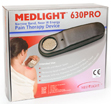
Modalities
- Ultra-sound - sound vibrations having an ultrasonic frequency
- Interferential Current (IFC) - is essentially a deeper form of TENS. IFC modulates a high frequency (4000 Hz) carrier waveform with the same signal produced by a TENS unit.
- Tens - stands for Transcutaneous Electrical Nerve Stimulation, and is predominately used for nerve related (acute and chronic) pain conditions. TENS machines work by sending stimulating pulses across the surface of the skin and along the nerve strands. The stimulating pulses help prevent pain signals from reaching the brain. Tens devices also help stimulate your body to produce higher levels of its own natural painkillers called; Endorphins.
- Electrical Muscle Stimulation (EMS) - also known as neuromuscular electrical stimulation (NMES) or electromyostimulation, is the elicitation of muscle contraction using electric impulses.
- MEDLIGHT 630 PRO Narrow Band, Near Infra-Red Light Pain and Wound Therapy - Medlight therapy is a hand held light effective for pain caused by arthritis, cramps and strains. It can be used in treating acne, psoriasis and eye floaters. Medlight is used in reducing the healing time of bruises, cuts fractures and other injuries.
Alternative Therapy - Serving Lakewood Ranch and the greater Sarasota/Bradenton area since 2000
Have a question? Contact us

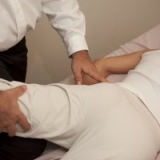
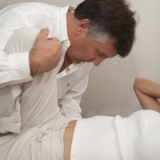
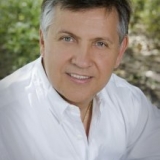
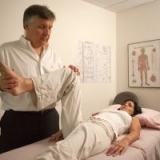
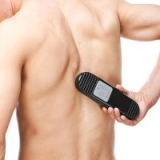
 W naszej klinice mówimy także po Polsku
W naszej klinice mówimy także po Polsku






